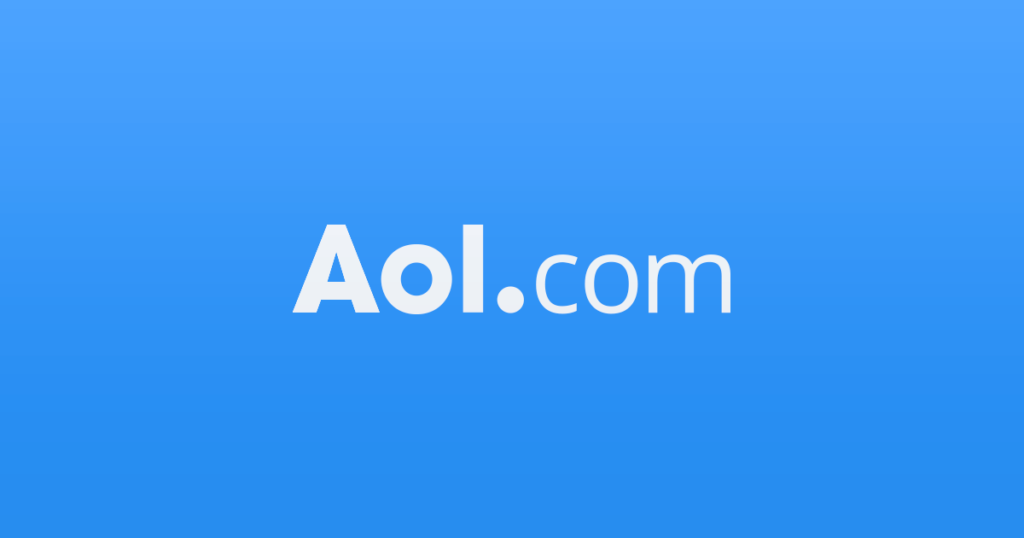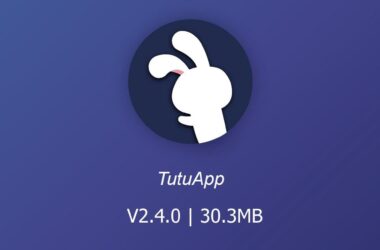In a rapidly evolving digital landscape, finding the right tools and platforms to meet your online needs is crucial. AOL (America Online), once a pioneer in the online realm, offered a range of services from email and instant messaging to internet portals. However, as technology advances and user preferences shift, there is a growing demand for AOL alternatives that offer enhanced features, improved usability, and a more modern experience.
Unveiling AOL’s Features and Limitations

AOL, in its heyday, boasted a range of features that captured the attention of millions of users. It provided an integrated experience, combining email, instant messaging, news, and more, all within a single platform. While AOL’s approach was revolutionary at the time, its limitations have become apparent in today’s fast-paced digital world.
1. Features of AOL
1.1. Integrated Platform
AOL’s integration of email, instant messaging, and news was a pioneering concept, providing users with a unified experience. The convenience of having multiple communication and information-sharing tools under one digital roof was a novel approach that resonated with users seeking a cohesive online presence.
1.2. Online Community
One of AOL’s standout features was its creation of chat rooms and forums, which allowed users to connect with like-minded individuals, fostering an online community that transcended geographical boundaries. The sense of belonging and camaraderie that AOL’s online communities provided was unparalleled at the time.
2. Limitations of AOL
2.1. Outdated Interface
AOL’s interface has not kept up with modern design trends, leading to a less intuitive and visually appealing user experience. In an era where aesthetics and user-friendliness matter more than ever, AOL’s interface began to feel cumbersome and dated.
2.2. Limited Compatibility
As technology has evolved, AOL’s services may not seamlessly integrate with newer devices and platforms. The rise of mobile devices and cross-platform applications exposed AOL’s limitations in catering to the demands of a multi-device and interconnected world.
2.3. Privacy Concerns
AOL’s security measures may not match the stringent standards of today’s cybersecurity landscape. Users are increasingly concerned about data privacy, and AOL’s security protocols may not provide the level of protection required to safeguard sensitive information.
The Need for AOL Alternatives

The need for exploring AOL alternatives arises from several critical factors. As technology advances and user preferences evolve, users are seeking more advanced, secure, and versatile platforms to fulfill their online requirements. Here are some key considerations driving the need for AOL alternatives:
1. Enhanced Security and Privacy
With the rise of cyber threats and data breaches, users are placing a premium on secure and private online communication. Alternatives to AOL often offer robust encryption and privacy features that protect sensitive information from unauthorized access. This heightened security instills confidence in users, enabling them to communicate and share without the fear of compromising their personal data.
2. Modern User Experience
Modern internet users are accustomed to intuitive and visually appealing interfaces. AOL’s outdated design may no longer meet the expectations of users who demand seamless and user-friendly navigation. AOL alternatives invest in modern UI/UX design principles, ensuring a visually pleasing experience that facilitates efficient interaction and engagement.
3. Integration with Contemporary Tools
In today’s interconnected digital ecosystem, integration with other online tools and platforms is crucial. AOL alternatives frequently offer seamless compatibility with popular apps and services, enhancing productivity and streamlining workflows. Whether it’s integrating with cloud storage solutions or collaboration tools, these alternatives ensure a cohesive digital environment that meets the demands of modern users.
4. Diverse Communication Options
While AOL pioneered online communication, alternatives now offer a wider range of communication methods. Users seek platforms that provide not only email and instant messaging but also high-quality voice and video calls, group chats, and more. This diversity in communication options caters to different preferences and scenarios, enabling users to connect and collaborate in ways that best suit their needs.
5. Flexibility and Customization
AOL’s limitations in customization and adaptability are prompting users to explore alternatives that allow for greater flexibility in personalizing their online experience. Alternatives often provide customizable themes, stickers, and other features that cater to individual preferences. This personal touch empowers users to create a digital environment that reflects their unique identity and style.
Exploring Commonly Used AOL Alternatives

As you search for alternatives to AOL, a diverse array of options is available, each catering to different preferences and needs. Let’s delve into a comprehensive list of 11 AOL alternatives, highlighting their unique features and benefits:
1. Gmail by Google
Gmail has risen to become one of the most popular email services globally. Its robust feature set and seamless integration with other Google services make it a top choice for users seeking a versatile email solution. Key features include:
- Generous Storage: Gmail provides a generous storage capacity that ensures you won’t have to worry about running out of space for your emails and attachments.
- Powerful Search: Google’s advanced search algorithms enable you to quickly locate specific emails, even if they were sent years ago.
- Integration with Google Suite: Gmail seamlessly integrates with other Google tools like Google Drive, Google Calendar, and Google Docs, enhancing your overall productivity.
2. Outlook.com by Microsoft
Microsoft’s Outlook.com offers a comprehensive email and personal information management experience. Its user-friendly interface and integration with Office 365 tools make it a preferred choice for business and personal use. Key features include:
- Clean Interface: Outlook.com presents a clean and organized interface that simplifies email management, helping you stay on top of your communications.
- Focused Inbox: The Focused Inbox feature intelligently separates important emails from less relevant ones, allowing you to prioritize your messages efficiently.
- Integration with Office 365: Seamless integration with Microsoft’s Office suite enables you to transition between email and productivity tasks seamlessly.
3. Yahoo Mail by Yahoo (now part of Verizon Media)
Yahoo Mail remains a popular choice for many users, offering a blend of reliable email services and access to Yahoo’s diverse content offerings. Key features include:
- Customizable Themes: Personalize your inbox with a range of customizable themes, allowing you to create an email environment that suits your preferences.
- Powerful Search: Yahoo Mail’s search functionality helps you quickly locate emails, contacts, and attachments, ensuring you can find what you need with ease.
- News and Entertainment: Access to Yahoo’s news, finance, and entertainment content directly from your inbox adds an extra layer of convenience.
4. WhatsApp by Facebook
WhatsApp has transformed into a ubiquitous instant messaging app with a strong focus on privacy and ease of use. It offers a range of communication features that keep you connected with friends, family, and colleagues. Key features include:
- End-to-End Encryption: WhatsApp’s commitment to privacy is evident through its end-to-end encryption, ensuring that only you and the intended recipient can read your messages.
- Voice and Video Calls: High-quality voice and video calling capabilities enable you to engage in real-time conversations with contacts across the globe.
- Group Chats: Group chats allow you to communicate and collaborate with multiple people simultaneously, making it ideal for both personal and professional interactions.
5. Telegram
Telegram stands out as a secure and feature-rich messaging app that puts privacy at the forefront. Its robust encryption and customizable features make it an appealing choice for users seeking a versatile communication platform. Key features include:
- Chat Customization: Express your personality through chat customization options, including themes and a vast library of stickers.
- Cloud Storage: Telegram’s cloud storage lets you securely store files, photos, and videos, ensuring you can access your media from any device.
- Secret Chats: Engage in private conversations with end-to-end encryption and the ability to set messages to self-destruct after a certain period, adding an extra layer of confidentiality.
6. Signal
Signal has earned a reputation for its uncompromising focus on privacy and security. It offers a suite of communication features designed to protect your personal information while facilitating seamless interactions. Key features include:
- Advanced Encryption: Signal employs advanced encryption protocols to ensure that your messages and calls remain private and secure.
- Disappearing Messages: For added privacy, you can set messages to disappear automatically after a specified duration, reducing the digital footprint of your conversations.
- Secure Voice and Video Calls: Signal’s voice and video calling capabilities provide clear and encrypted communication, allowing you to connect without sacrificing security.
7. Discord
Originally designed for gamers, Discord has evolved into a versatile communication platform that caters to various online communities and interest groups. It offers a range of features that facilitate communication and collaboration. Key features include:
- Community Building: Discord enables you to create or join servers based on your interests, fostering connections with like-minded individuals.
- Voice and Video Chats: Engage in high-quality voice and video conversations with friends, colleagues, or fellow community members.
- Bot Integration: Customize your server with bots that add various functionalities, from moderation to entertainment features.
8. Slack
Slack has gained popularity as a collaboration hub that streamlines communication within teams and organizations. Its integration with various third-party apps and focus on organized communication make it a valuable tool for productivity. Key features include:
- Channel Organization: Slack’s channels provide a structured framework for organizing discussions, ensuring that conversations are relevant and accessible.
- Integration with Apps: Connect Slack with an array of third-party apps to enhance collaboration and streamline workflows, making it a centralized hub for your digital tools.
- Search Functionality: Slack’s robust search functionality lets you quickly locate messages, files, and conversations, saving you time and effort.
9. WeChat
WeChat has become an all-encompassing communication and social media app with a strong presence in China. It offers a wide range of features that extend beyond messaging, making it an essential app for daily life. Key features include:
- Messaging and Calling: WeChat provides traditional messaging and voice/video calling features, ensuring you can stay connected with friends and family.
- Mini Programs: Access a variety of services through integrated mini-programs, from shopping and transportation to entertainment and news, all within the app.
- Social Networking: Share updates and connect with friends through the Moments feature, creating a sense of community and engagement.
10. Viber
Viber offers a combination of free calling, messaging, and additional features that enhance communication and self-expression. Its focus on high-quality communication and diverse content sets it apart. Key features include:
- Crystal-Clear Calls: Viber’s voice and video calls deliver high-quality communication, ensuring you can connect with clarity and ease.
- Sticker Market: Express yourself creatively with an extensive collection of stickers and GIFs, adding a fun and personalized touch to your conversations.
- Public Chats: Follow celebrities, brands, and public figures through Viber’s public chats, keeping you informed and entertained within the app.
11. Line
Line is a popular messaging app with a broad range of features designed to facilitate communication and expression. Its extensive library of stickers and emojis, along with its focus on multimedia sharing, make it a dynamic choice. Key features include:
- Stickers and Emojis: Choose from a vast collection of stickers and emojis to convey your emotions and personality in conversations.
- Video and Voice Calls: Engage in high-quality video and voice calls, enabling you to connect with friends and family regardless of geographical distance.
- Line Pay: Seamlessly send and receive money, make payments, and even shop within the app, simplifying financial transactions.
Factors to Consider While Choosing the Perfect AOL Alternative

When evaluating AOL alternatives, several key factors should influence your decision:
1. User Interface and Experience
Choose an alternative with a modern and intuitive user interface, ensuring ease of use and efficient navigation. A well-designed interface enhances user satisfaction and contributes to a seamless online experience.
2. Security and Privacy
Prioritize alternatives that offer robust security measures, such as end-to-end encryption and privacy-focused features. Ensuring the safety of your online communications and data is paramount in today’s digital landscape.
3. Integration and Compatibility
Select alternatives that seamlessly integrate with your existing tools and platforms, enhancing your overall productivity. Compatibility ensures that you can leverage your preferred digital tools without friction.
4. Feature Set
Consider the specific features offered by each alternative and assess how well they align with your needs and preferences. Look for features that enhance communication, collaboration, and overall online functionality.
5. Customer Support
Opt for alternatives with reliable customer support to address any issues or concerns that may arise. Effective customer support ensures that you have assistance whenever you encounter challenges or have questions about the platform.
Conclusion: Embrace the Evolution
As technology continues to evolve, embracing new and improved alternatives to AOL is essential for staying connected and productive in today’s digital age. Whether you’re seeking advanced email services, secure messaging platforms, or seamless integration with other tools, the options are abundant. By considering your unique requirements and priorities, you can confidently transition to an AOL alternative that aligns perfectly with your online needs.







![[pii_email_c4d57a441e42e1f6a736] Error](https://rocketfiles.com/wp-content/uploads/2023/03/encryption-your-data-digital-lock-hacker-attack-and-data-breach-big-picture-id1179590017-380x250.jpg)

